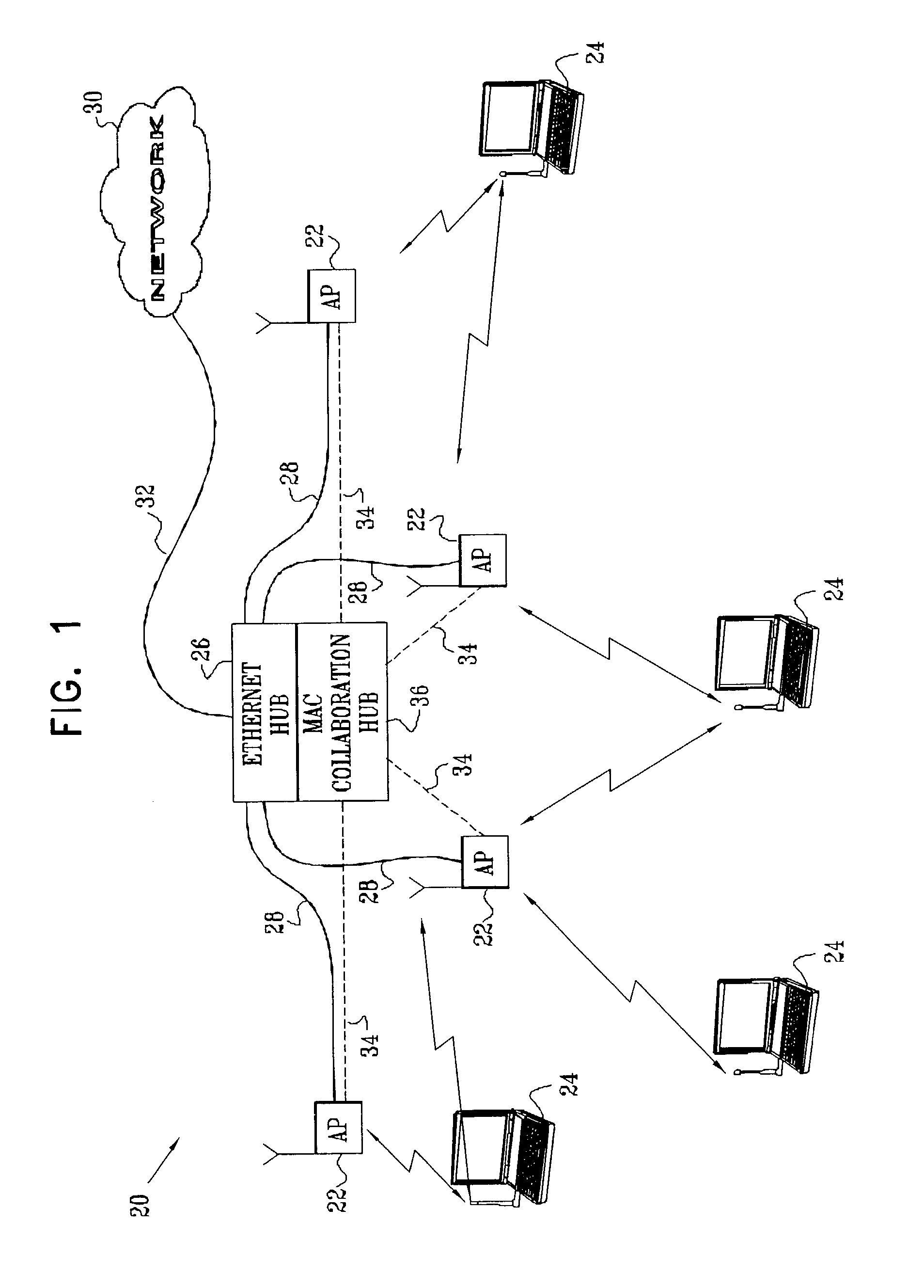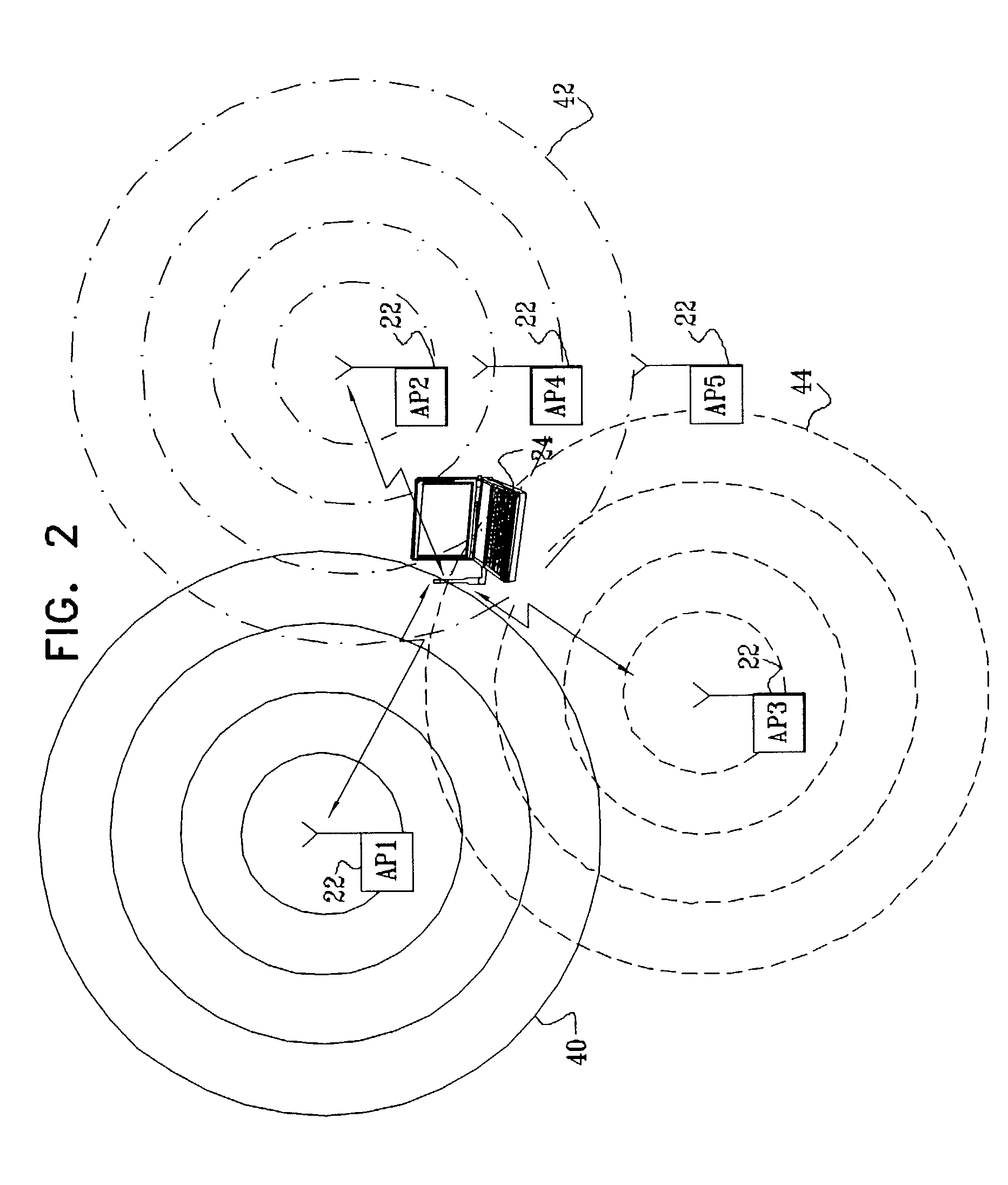CDMA messaging between wireless LAN access points
a wireless lan access point and cdma technology, applied in the field of wireless communications, can solve the problems of slowing down the wlan access for all other users in its basic service set, unable to decipher either signal, and severely hampered the theoretical capability of new wlan technologies to offer enormous communication bandwidth to mobile users, etc., to achieve the effect of enhancing the coverage and speed of wlan systems
- Summary
- Abstract
- Description
- Claims
- Application Information
AI Technical Summary
Benefits of technology
Problems solved by technology
Method used
Image
Examples
Embodiment Construction
[0029]FIG. 1 is a block diagram that schematically illustrates a wireless LAN (WLAN) system 20, in accordance with a preferred embodiment of the present invention. System 20 comprises multiple access points 22, which are configured for data communication with mobile stations 24. The mobile stations typically comprise computing devices, such as desktop, portable or handheld devices, as shown in the figure. In the exemplary embodiments described hereinbelow, it is assumed that the access points and mobile stations communicate with one another in accordance with one of the standards in the IEEE 802.11 family and observe the 802.11 medium access control (MAC) layer conventions. Details of the 802.11 MAC layer are described in ANSI / IEEE Standard 801.11 (1999 Edition), and specifically in Part 11: Wireless LAN Medium Access Control (MAC) and Physical Layer (PHY) Specifications, which is incorporated herein by reference. The principles of the present invention, however, are not limited to ...
PUM
 Login to View More
Login to View More Abstract
Description
Claims
Application Information
 Login to View More
Login to View More - R&D
- Intellectual Property
- Life Sciences
- Materials
- Tech Scout
- Unparalleled Data Quality
- Higher Quality Content
- 60% Fewer Hallucinations
Browse by: Latest US Patents, China's latest patents, Technical Efficacy Thesaurus, Application Domain, Technology Topic, Popular Technical Reports.
© 2025 PatSnap. All rights reserved.Legal|Privacy policy|Modern Slavery Act Transparency Statement|Sitemap|About US| Contact US: help@patsnap.com



